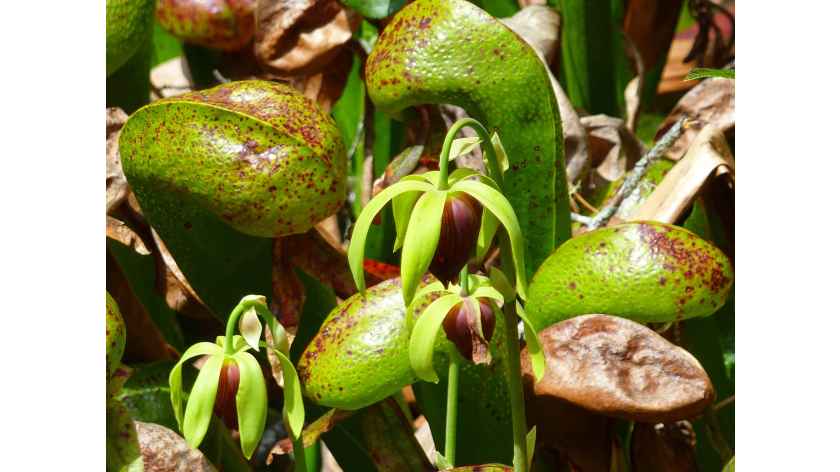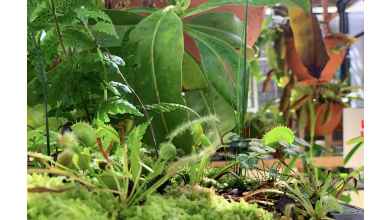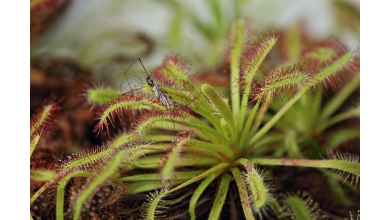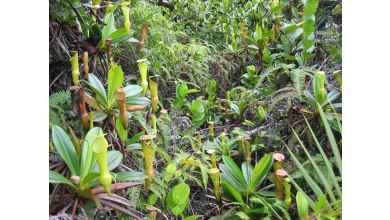Darlingtonia Californica Care Guide

Darlingtonia Californica Care Guide: Tips to Keep Your Carnivorous Plant Thriving
If you're a fan of carnivorous plants, then you've probably heard of Darlingtonia Californica, also known as the Cobra Plant. With its striking appearance and unique carnivorous habits, this plant is a popular choice for many gardeners and plant enthusiasts. However, like all plants, it requires specific care to keep it healthy and thriving. In this article, we'll provide you with a comprehensive Darlingtonia Californica care guide to ensure your plant remains in tip-top shape.
Introduction to Darlingtonia Californica
Before we dive into the details of caring for Darlingtonia Californica, let's first get to know this unique plant species. Darlingtonia Californica is a carnivorous plant native to North America, specifically found in the Pacific Northwest. It's a type of pitcher plant, and its unique shape resembles a cobra about to strike. The plant's leaves are tubular and covered in small hairs that point downward, directing any insects or small animals that fall into the plant towards the digestive juices located at the bottom of the tube.
Choosing the Right Growing Conditions
When it comes to caring for Darlingtonia Californica, the first step is to ensure that you're providing the right growing conditions. Here are some factors to consider:
Temperature
Darlingtonia Californica grows best in cool temperatures, ideally ranging from 60°F to 80°F. This plant is native to areas with cooler climates, so it's important to avoid exposing it to excessive heat, which can cause the plant to wilt or even die.
Light
This carnivorous plant thrives in bright, indirect light. Direct sunlight can scorch its leaves, while too little light can stunt its growth. Place your Darlingtonia Californica in a spot that receives dappled sunlight or use a grow light if you're growing it indoors.
Soil
Like many carnivorous plants, Darlingtonia Californica prefers moist, acidic soil. You can use a mix of peat moss and perlite to create a suitable growing medium for your plant.
Watering Your Darlingtonia Californica
One of the most critical aspects of Darlingtonia Californica care is watering. These plants require consistent moisture to survive. However, overwatering can be just as damaging as underwatering. Here are some tips to keep in mind:
Water Quality
Darlingtonia Californica is sensitive to the quality of water it receives. Avoid using tap water, which may contain chemicals or minerals that can harm your plant. Instead, use distilled or rainwater.
Watering Frequency
As a general rule, you should keep the soil of your Darlingtonia Californica consistently moist. You can achieve this by watering it regularly, about once a week. However, if you live in a dry climate or if the plant is exposed to more sunlight than usual, you may need to water it more often.
Watering Technique
When watering your Darlingtonia Californica, avoid pouring water into the pitcher. Instead, pour water directly onto the soil to prevent washing away the digestive enzymes at the bottom of the pitcher.
Fertilising Your Darlingtonia Californica
Since Darlingtonia Californica is a carnivorous plant, it obtains most of its nutrients from the insects it catches. Therefore, it doesn't require fertiliser in the traditional sense. However, if you want to give your plant an extra boost, you can use a diluted fertiliser solution during the growing season.
Pruning and Propagation
Like any plant, Darlingtonia Californica requires periodic pruning to remove dead or damaged leaves. Additionally, you can propagate your plant by dividing it during its dormant period, which usually occurs in the winter months. Simply dig up the plant, gently separate the roots, and replant each section in its own pot.
Pests and Diseases
Like all plants, Darlingtonia Californica is susceptible to pests and diseases. Here are some common issues you should watch out for:
Aphids
Aphids are a common pest that can infest Darlingtonia Californica. They can be controlled using an insecticidal soap or by introducing natural predators like ladybirds.
Root Rot
Root rot can occur if the plant is overwatered or if the soil is not well-draining. To prevent root rot, make sure the plant is not sitting in standing water and that the soil has good drainage.
Spider Mites
Spider mites are tiny pests that can suck the sap from the leaves of your Darlingtonia Californica. They can be controlled using insecticidal soap or by introducing natural predators like predatory mites.
Conclusion
Darlingtonia Californica is a unique and fascinating plant that requires specific care to keep it healthy and thriving. By following the tips in this Darlingtonia Californica care guide, you can ensure that your plant remains in excellent condition. Remember to provide the right growing conditions, water your plant properly, and watch out for pests and diseases.
FAQs
- Can I grow Darlingtonia Californica indoors?
- Yes, you can grow Darlingtonia Californica indoors as long as you provide it with the right growing conditions, including bright, indirect light and consistently moist soil.
- How often should I water my Darlingtonia Californica?
- You should water your Darlingtonia Californica about once a week, but adjust the frequency based on the humidity and temperature of your environment.
- Can I use tap water to water my Darlingtonia Californica?
- No, it's best to avoid using tap water as it may contain chemicals or minerals that can harm your plant. Instead, use distilled or rainwater.
- What kind of soil should I use for my Darlingtonia Californica?
- Darlingtonia Californica prefers moist, acidic soil. You can use a mix of peat moss and perlite to create a suitable growing medium.
- How do I propagate my Darlingtonia Californica?
- You can propagate your Darlingtonia Californica by dividing it during its dormant period in the winter months. Simply dig up the plant, gently separate the roots, and replant each section in its own pot.
Carnivorous Pitcher Plants May Lure Insects with Smell

Types of Carnivorous Plants

What Do Carnivorous Plants Eat?

Are There Any Carnivorous Plants in the UK?

How to Grow Venus Fly Trap from Seeds

Cephalotus Care Guide

